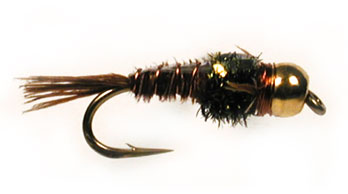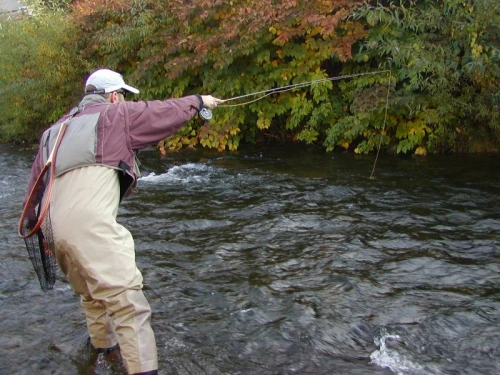Czech nymphing is a fishing technique that has been gaining popularity among anglers in recent years. Originally developed in the Czech Republic, this method involves using a lightweight fly rod and specialized nymph flies to target and catch fish in rivers and streams.
One of the main attractions of Czech nymphing is its effectiveness in catching a variety of fish species. This technique has been used successfully to catch everything from small trout to large bass and pike. In fact, many anglers believe that Czech nymphing is one of the most effective ways to catch fish in moving water.
The key to successful Czech nymphing is in the presentation of the fly. Anglers using this technique often employ a “high stick” method, in which the fly is presented just above the bottom of the stream or river. This allows the fly to drift naturally with the current, making it more attractive to the fish.
One of the benefits of Czech nymphing is that it can be done using a lightweight fly rod, which makes it easier to cast and control the line. This makes it a great option for anglers who may not have the strength or experience to use a heavier rod.
If you’re interested in trying Czech nymphing, it’s important to invest in the proper equipment and seek out the guidance of an experienced instructor. There are also a number of instructional videos and books available that can help you learn the technique.
Overall, Czech nymphing is a highly effective fishing technique that is worth considering for anglers of all skill levels. Whether you’re a seasoned pro or a beginner looking to try something new, this method is sure to provide an exciting and rewarding experience.
Equipment for Czech Nymphing
One of the things that sets Czech nymphing apart from other fishing techniques is the use of specialized nymph flies. These flies are typically small, weighted, and designed to imitate the appearance and movement of underwater insects. They are usually fished using a “tight line” method, in which the fly is kept in close contact with the rod tip as it drifts downstream. This allows the angler to detect any subtle movements or “takes” from the fish.

In addition to the fly, Czech nymphing also requires the use of a specialized leader and tippet setup. The leader is typically long and tapered, with a short, heavy section near the fly and a longer, lighter section near the rod. This helps to create a smooth, natural drift for the fly and also allows for better line control. The tippet, meanwhile, is a thin section of monofilament or fluorocarbon line that is attached to the end of the leader and serves as the final connection to the fly.
One of the challenges of Czech nymphing is in accurately presenting the fly to the fish. Unlike traditional fly fishing, which often involves casting the fly to a specific spot, Czech nymphing requires the angler to constantly adjust the line and fly as they drift downstream. This requires a good deal of skill and practice, but it can also be very rewarding when done correctly.
One of the key advantages of Czech nymphing is its ability to fish water that may be too deep or fast to wade. By using a long leader and a high stick method, anglers can effectively fish water that would otherwise be inaccessible. This makes it a great option for targeting fish in larger rivers or streams, or in areas with limited access.
If you’re thinking about giving Czech nymphing a try, it’s worth taking the time to learn the proper techniques and invest in the right equipment. With a little practice, you’ll be able to master this exciting and effective fishing method in no time. So, it is a good idea to try it and enjoy the fishing.
Featured image: https://www.czechnymph.com/en/fly-fishing-articles/fly-fishing-techniques/3-czech-nymphing
